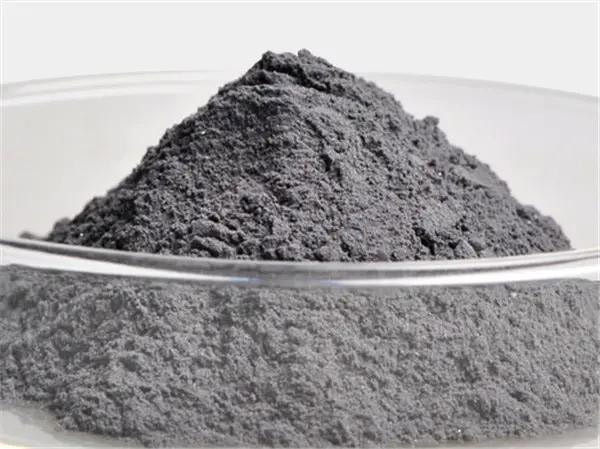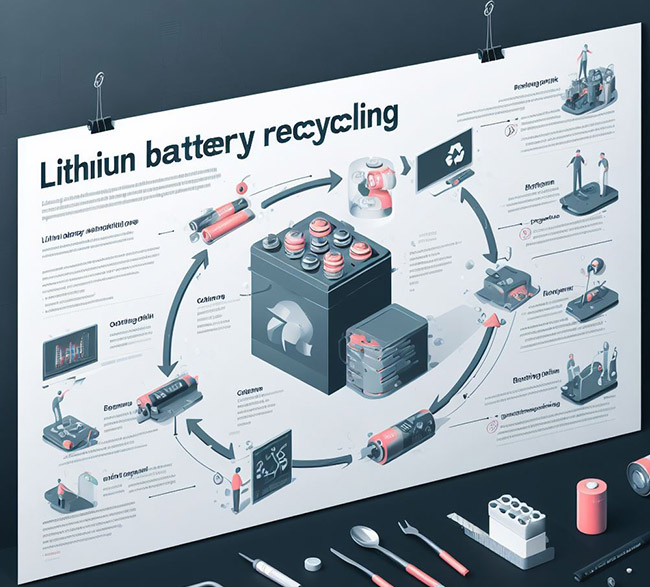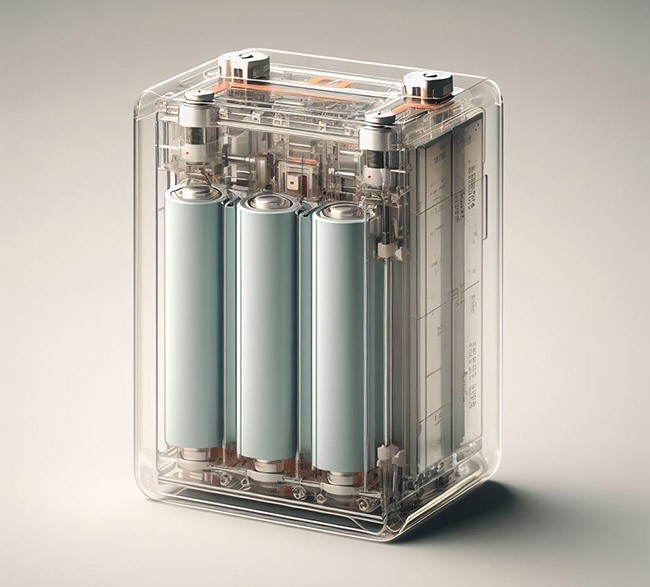We've all been there: desperately seeking an outlet as our screens flash a dreaded low-battery warning. But how much do we truly know about these tiny titans powering our connected lives?
Are cell phone batteries lithium batteries? This seemingly simple question opens up a world teeming with chemical reactions and electric currents, waiting just beneath the glass surface of your favorite gadget. By exploring it further together, we'll unveil not only their intricate inner workings but also why they're at the heart of today's mobile revolution.
Get ready for an adventure! We're about to dive into a world where ions are zipping back and forth on a microscopic scale.
Table Of Contents:
- Understanding Cell Phone Batteries
- Exploring Lithium-ion Batteries
- Advantages of Lithium-ion Batteries in Cell Phones
- Battery Recycling and Environmental Impact
- Common Issues and Troubleshooting for Cell Phone Batteries
- Future Developments in Cell Phone Battery Technology
- Conclusion
Understanding Cell Phone Batteries
The battery is the core of any mobile device, including cell phones and advanced smartphones like iPhones or Samsung mobiles. The most common type? Lithium-ion batteries.
Why are lithium-ion batteries so popular in consumer electronics? It's simple - they're lightweight, have a high energy density and can handle hundreds of charge cycles before their capacity diminishes significantly. In fact, over 170 million wireless consumers in the United States alone rely on these types of phone batteries daily.
Lithium ions play a key role here. An electrical current initiates the movement of lithium ions between the ends of the battery, allowing for charging and discharging. This process repeats when your phone discharges its stored energy as you use it throughout the day.

Maintaining proper care for your smartphone’s power source isn’t just about keeping that screen lit up longer between charges though. Battery safety is crucial too since misuse could lead to problems down the line.
Exploring Lithium-ion Batteries
Lithium-ion batteries are the lifeblood of modern smartphones. They're not just any old power cells; they've got a unique chemistry that sets them apart.
The Anatomy of a Li-po Battery (a.k.a. "Spicy Pillow")
At the heart of every lithium-ion battery, you'll find two key players: diethyl carbonate and lithium cobalt oxide. The electrolyte, diethyl carbonate, facilitates the transfer of lithium ions between electrodes during charging and discharging cycles. This flow creates an electrical current, giving your phone's power cell its juice.
Lithium cobalt oxide, on the other hand, forms one side of this energy tug-of-war - it’s where those tiny lithium ions start their journey when your phone reaches full charge. But why does all this matter?

Well, because these elements make lithium batteries work efficiently while providing high energy density - something our consumer electronic devices crave. It also allows for what we call 'trickle charging', letting batteries charge faster and safer.
Battery safety is crucial though, as Li-Ion batteries can be sensitive to physical stress according to U.S Consumer Product Safety Commission (CPSC). So remember folks, always use compatible chargers.
This powerful duo inside each battery cell also makes rechargeable lithium-ions lighter than traditional lead-acid or nickel-cadmium counterparts – another reason behind their growing popularity in mobile phones like iPhones or Samsungs.
Advantages of Lithium-ion Batteries in Cell Phones
It's no secret that lithium-ion batteries have taken center stage when it comes to powering our cell phones. But why exactly is this the case? Let's peel back the layers.
Why Choose Lithium-Ion?
The answer lies in their high energy density and capacity. Simply put, they offer a great deal of energy within a limited space. Li-po batteries are one of the most energy-dense electrical storage options available, making them ideal for modern devices like iPhones or Samsung mobiles that need to keep going all day long.
Beyond just capacity, lithium-ion batteries also excel at maintaining voltage stability during discharge cycles. This means your phone won't suddenly drop from 20% battery life to zero - we've all been there.
Last but not least, these types of batteries don't suffer from the memory effect - a phenomenon where repeated partial discharging can lead rechargeable batteries to forget their full capacity over time.
A Winning Choice for Manufacturers
Lithium-ion technology isn’t only loved by consumers; manufacturers favor it too. These benefits make Li-Ion an appealing choice when creating products designed for extended use while keeping size and weight minimal.
So next time you're enjoying hours on end with your phone without needing a charge remember: It’s thanks largely to those hardworking lithium ions inside.
Battery Recycling and Environmental Impact
When it comes to the environment, our cell phone batteries leave a mark. It's not just about power - these little devices are packed with toxic chemicals.
Imagine tossing a lithium-ion battery into your trash bin. Not only does this waste valuable resources like cobalt and nickel, but it also introduces harmful substances into our ecosystems.
This is where recycling programs step in. They're not just for soda cans and newspapers anymore; they help us manage electronic waste responsibly too.

The Importance of Proper Disposal
Proper disposal of old batteries is encouraged, but what does that look like? Well, you can start by checking out recyclewirelessphones.com. This handy resource provides information on how to dispose of old equipment safely.
You see, proper handling isn't just good for Mother Earth - it protects human health too. So next time you upgrade your mobile device or replace its battery think twice before chucking the old one in any random bin.
Making Battery Recycling a Habit
We all know habits can be hard to break...but some are worth making. Making recycling part of your routine benefits everyone: from reducing landfill usage to minimizing environmental damage caused by improperly disposed electronics.
Remember: Your used iPhone or Samsung mobile phone batteries may seem small in the grand scheme of things—but their impact certainly isn't.
Common Issues and Troubleshooting for Cell Phone Batteries
Don't be alarmed if your cell phone battery's performance appears to be declining. It might not need a trip to the service center.
Navigating Battery Issues
All batteries possess a finite number of charge cycles, which is the count of times it can be taken from fully charged to completely discharged. This is simply how many times it can go from fully charged to completely discharged.
A decrease in capacity over time doesn't necessarily cause for alarm - it's normal as a battery age or if your phone reaches its maximum number of charge cycles.
Battery discharge can also speed up when there are too many apps running simultaneously or when operating in high temperatures. The fix is to close unused apps and avoid exposing your device to extreme heat.
Sometimes, you may notice your phone charged but quickly losing power. If this happens often, try calibrating the battery by draining it completely and then charging it back up to 100%. Remember though: regular full discharges can shorten the overall lifespan.
Trouble with Trickle Charge?
You've probably heard about trickle charge – that last bit of juice added after reaching around 80% which keeps our devices topped off while plugged in overnight.
However, prolonged periods at full capacity diminish performance over time because lithium ions flow less freely due to constant voltage pressure. So ideally keep them between 20%-80% most times for optimal health.
Note:Always use manufacturer-approved chargers for safety and best results.
Future Developments in Cell Phone Battery Technology
The battery world is buzzing with innovation, particularly around lithium cobalt oxide (LiCoO2), a common material found in smartphone batteries. Companies like Apple and Samsung are pushing the boundaries of what's possible with cell phone batteries.
Battery makers have been exploring options for lithium-ion tech, such as solid-state and graphene batteries, in addition to the more thermally stable lithium iron phosphate (LFP). Solid-state tech could offer increased safety by replacing flammable liquid electrolytes, while graphene promises faster charging times.
Lithium iron phosphate (LFP) has also emerged as a safer alternative to traditional lithium-ion cells due to its superior thermal stability. LFP might not deliver quite the same energy density but it makes up for this shortcoming through enhanced safety characteristics. This video tour inside an iPhone battery factory gives you a sneak peek into how these advancements are taking shape.

A Glimpse at the Future: Lithium-Sulfur Batteries?
Innovation isn't slowing down either. Research on Lithium-sulfur (a.k.a Li-S) batteries shows potential for higher energy densities - possibly double that of current lithium-ion variants.
Smartphones could soon be able to run for much longer on one charge than they do now, thanks to research into Li-S batteries. But don't hold your breath just yet; there's still work needed before we see Li-S make their way into our pockets.
All things considered, exciting changes lie ahead in the realm of mobile phone power sources.
Conclusion
Yes, our cell phone batteries are indeed lithium batteries. These compact powerhouses work tirelessly to keep us connected, day in and day out.
Manufacturers favor lithium-ion tech for their cutting-edge products - from smartphones to electric cars - because of its power density and efficiency. It's why manufacturers favor them for modern devices - from smartphones to electric cars.
Maximizing your battery life involves understanding how they function: trickle charge methods, paying attention to charge cycles, or even something as simple as keeping your phone cool can help prolong its lifespan.
We've also got a responsibility towards proper disposal of old batteries; after all, we want our tech habits to cause minimal harm on this planet we call home!
Battery issues? Don't panic! The service center or even some DIY troubleshooting could fix common problems related to battery discharges or capacity diminishes.
The future seems bright too! With ongoing research into more efficient materials like lithium iron phosphate and manganese oxide replacing traditional cobalt-based cells - expect exciting leaps forward in mobile power technology.
 sales@batterydeji.com
sales@batterydeji.com




